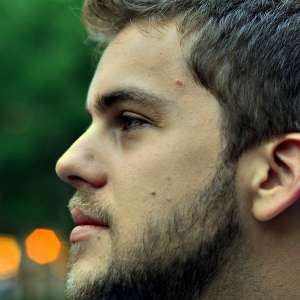Stephanie Blythe appeared in recital with Les Violons du Roy Saturday evening at the Maison Symphonique de Montréal, the second stop in a seven-city tour that the renowned mezzo-soprano is taking with the ensemble this fall. Blythe performed Haydn’s infrequently heard cantata Arianna a Naxos and favorite arias from Handel’s Giulio Cesare. The program was supplemented with two orchestra suites by Telemann and J.S. Bach, both featuring three oboes, strings and continuo.
Though Blythe is particularly known for her performances of Verdi and Wagner, she is certainly no stranger to 18th-century repertoire. In fact, Blythe is perhaps the only artist who has performed leading roles in both Das Rheingold and Rodelinda at the Metropolitan Opera, singing each with equal ease. Saturday evening, Blythe proved once again that her instrument is powerful yet still agile enough to sing highly melismatic vocal writing.
Haydn’s Arianna a Naxos was, for me, the highlight of the evening. The story of Arianna, abandoned by her lover Theseus on the island of Naxos, has been a favorite of composers for centuries. Haydn originally wrote his Arianna for voice and piano alone. The work became so popular, that other composers published arrangements of it. Eventually, Haydn himself arranged the piece for voice and string orchestra; it’s a perfect piece for Blythe to perform with Les Violons du Roy, one of the world’s leading chamber orchestras dedicated to this repertoire.
In the opening accompanied recitative, “Teseo mio ben, dove sei?” (“Teseo, my love where are you?”), Arianna calls out to her love as she stares out to sea at dawn. The orchestra perfectly captured the naturalistic effects of “rosy Aurora” greeting the day that Haydn included in his score. With Bernard Labadie’s carefully attention to detail, the orchestra was able to effectively adapt to the sudden, often dramatic changes in tempo, texture and dynamic during this recitative and through the entire cantata. As a result, though Blythe performed in recital, the orchestra was able to provide a scenic backdrop in sound, transporting the audience to another time and place with only their instruments.
Of course, the audience was also transported due to Blythe’s consummate skill as a singing actress. Her interpretation was incredibly earnest, and it is obvious that she carefully considered how to create the character of Arianna as if she were preparing to perform the role in a full-length opera.
Lamenting in a major key can be difficult – particularly in a highly formal yet simple style like that of Haydn and his contemporaries. The aria “Dove sei” from Haydn’s cantata could easily sound insincere; pretty, but hardly full of pathos that the text and dramatic situation demand. At the end of the first section of the aria, for example, Arianna sings about dying of grief to a repetitious melody that is simple and formulaic. Blythe, however, colored this particular phrase with her breath so that it sounded like a heart wrenching sigh, highlighting the bittersweet sentimentality inherent in the music. A moment like this, other singers may have overlooked.
During the second half of the program, Blythe sang arias from Handel’s Giulio Cesare. While I would have loved to hear Blythe sing one of my favorite arias for Cesare in the opera, “Va tacito e nascosto”, Labadie was not travelling with the requisite performance forces. Instead, Blythe sang Cesare’s furious aria “Empio, dirò, tu sei”, his recitative and aria “Dall’ondoso periglio…Aure, deh, per pieta”, and Tolomeo’s aria “L’empio, sleale, indegno”.
I was thrilled with Blythe’s performance of “L’empio, sleale, indegno” in particular. Never has this aria sounded more ferocious! I can only imagine how haughty and terrifying Tolomeo would be if I could see Blythe perform the role in its entirety. After her performance of “Empio, dirò, tu sei”, an audience member seated behind me sighed an audible “wow”.
Two orchestral suites by Telemann and Bach rounded out the program. Both works featured oboists Marjorie Tremblay, Lindsay Roberts and Vincent Boilard as soloists – all three a joy to hear. Bassoonist Mathieu Lussier should also be commended for his skillful performance during the many passages played by double reeds alone, an orchestral scoring that can easily sound like a flock of geese if your bassoonist’s intonation is not absolutely perfect!
Hearing similar pieces by both Telemann and Bach on the same program offers an interesting opportunity to compare their styles. Though they were both friends and colleagues, Telemann was a bit worldlier, and his suite is filled with variety rarely heard in Bach. The Telemann suite Les Violons du Roy performed contained several “character” pieces including a Spanish dance, a comic “Harlequinade”, and a dulcet sleep scene. The suite by Bach on the same program sounds rather conservative in comparison. It’s a wonder that Telemann, who was the more renowned composer in his own time, has not become more popular during today’s early music revival. Luckily, ensembles like Les Violons du Roy are encouraging audiences to enjoy underappreciated works and composers.
Considering Saturday’s performance featured such an outstanding ensemble and an internationally admired vocal soloist, I was surprised that the Maison Symphonique de Montréal, which seats approximately two thousand, was perhaps only half full. The top two rings of the hall did not contain a single patron, and several rows in the available seating areas were completely empty. Though the newly built Maison Symphonique is a gorgeous facility with a superb acoustic, the concert may have been improved if it were performed in a more intimate venue.


